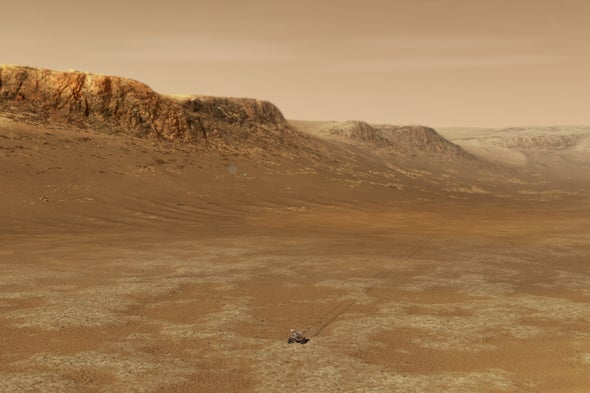The First 100 Days on Mars: How NASA’s Perseverance Rover Will Begin Its Mission
在太空任务中,时间就是一切。要想成功完成太空任务,需要复杂的执行命令和动作编排能力,而没有什么比在另一个世界的表面上冒险更需要这些能力了。今年2月18日,美国国家航空航天局(NASA)将在火星上开展一次精彩的太空戏剧,届时它的“毅力”(Perseverance)号火星车将登陆火星。“毅力”是2012年登陆火星的“好奇号”(Curiosity)的继任者,外形与“好奇号”完全相同。它的任务是寻找火星上过去存在过的生命,并进行其他令人兴奋的实验。
On a space mission, timing is everything. An intricate choreography of commands and actions is required to make any such mission a success, and none more so than an escapade on the surface of another world. Now, on February 18, NASA is set for another delicate dance of interplanetary chronology when its Perseverance rover touches down on Mars—the successor to its aesthetically identical sibling, Curiosity, which landed in 2012. This time around, the mission is conducting a search for past life on Mars, alongside other exciting experiments.
这个1025公斤重的火星车由一个放射性同位素热电发电机提供动力,钚衰变时产生的热量能提供能量,有助于它避免因车上沾满灰尘而陷入无法工作的状态(“机遇号”和“勇气号”这前两架由太阳能驱动的火星车就是因为这个过早地结束了任务)。另一方面,在着陆后能尽快起身并快速行动也是至关重要的。火星车的主要任务将持续一个火星年(两个地球年),它将进行大量的科学研究。而且,尽管它的任务可能会延长,但考虑到它的着陆点(位于耶泽罗陨石坑内的古老的火星河流三角洲)情况异常复杂,科学家们希望能尽早开始研究。
The 1,025-kilogram rover is powered by a radioisotope thermoelectric generator, fueled by heat from decaying plutonium, which should help it avoid a dust-laden fate such as prematurely ended the missions of its solar-powered predecessors Opportunity and Spirit; but getting up and running as soon as possible after the landing is still crucial. The rover has an ambitious amount of science to conduct in its primary mission lasting one Martian year (two Earth years). And, although its mission is likely to be extended, given the overwhelming richness of its landing site in the ancient Martian river delta within Jezero Crater, scientists are eager to get the ball rolling sooner rather than later.
然而,在他们着手进行研究之前,“毅力”号需要先花7分钟来自动下降到地面——这被称为“恐怖的7分钟”——然后检查其重要仪器否像之前一样正常工作。火星车的日程安排得很紧。当然,星球探索任务的时间总是会根据研究的进展而变化,但“毅力”号在火星上的头100天的时间表已经准备好了。(注意,火星上的一天大约比地球上的一天长40分钟。)
Before they can get down to that urgent business, however, Perseverance needs to first endure its autonomous seven-minute descent to the surface—known as the “seven minutes of terror”—and then check its vital organs are in working order as well as launch a first-of-its kind attempt at aerial flight. Suffice to say, the busy rover’s schedule is positively jam-packed. Interplanetary mission timings are always subject to change depending on how things progress, of course, but a timeline is already in place for Perseverance’s first 100 days on Mars. (Note, a day on Mars is about 40 minutes longer than a day on Earth.)
Read more at Scientific American
翻译:墨淞凌@STARSET_Mirror翻译组
审校:CDN@STARSET_Mirror翻译组











